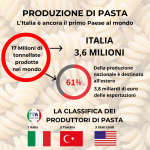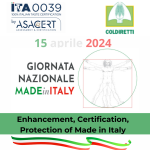It seemed years away but the long-awaited Phase 2 arrived, with its load of variables, doubts, projects to be put in place and fateful help from the Government still to be seen. This is the picture that Italian restaurateurs find themselves having to contemplate. One of those abstract works that you don’t know from which perspective it should be observed. Much has been lost, much more will be left on the tortuous path towards reopening. The May Decree (former April Decree) is expected as a comet star a little out of time and out of place. To date, nothing concrete, apart from understanding and promises. Italians trust in non-repayable aids, because the sector does not know what to do with the tax credit, with losses that have dried up accounts and left desolate canyons in the rooms, which were once full of customers and patrons.
Cities are preparing to grant more public space to the businesses that have to restart after the forced stop. Rethinking the urban space with the dehors of restaurants. Measures for lower public property occupation taxes (exempting activities for at least 6 months) are expected. A shorter (or even null) bureaucratic process for the authorization to put tables outside is expected.
The entire catering world is destroyed. We urgently need answers on the conditions to be able to open safely. Fipe (the Italian Federation of Public Exercises) and Confesercenti (one of the main Italian businesses associations) have drawn up a protocol, but it must be validated and certain answers must be obtained.
It will be necessary to find implementation strategies to harmonize the needs of social distancing with the structure of congested urban centers, to optimize spaces and resources. The most enlightened administrators are already taking a look abroad, to what has been put in place more quickly than has been done in Italy. There is talk of a “Lithuanian model“, where in the main cities the government has allowed businesses to extend the location to the squares and neighboring streets, helped by the mild season. Gastronomic oases that can host outdoors and with the right distances in complete safety. Just as drive-in cinemas where you can spend a movie night safely in your car were opened.
Similarly in Italy comes the mayor of Genoa‘s proposal to create gastronomic islands in the city, to favor outdoor tables for bars and restaurants.
In this direction also Rome, one of the most receptive cities in the spring season for its unquestionable timeless charm, where an extraordinary measure providing – upon presentation of a detailed project to the relevant City Hall – an expansion of the public land concession up to a maximum of 35% beyond the area already granted was approved, accompanied by a deregulation for practices with mandatory delivery times by the administration of 20 days from receipt of the application. Street furniture will have to take into account the expansion au dehors of the activities, contextually combining it with the requirements of road safety.
Bologna is heading in the same direction: tax relief, rearrangement of the parking lot spaces, but also sidewalks and porches can be populated with tables for refreshment activities, all at zero bureaucratic cost.
And again Udine, where there is talk of the net doubling of the space of public land destined for restaurant activities. Strategic closure of some roads, pedestrian areas during the weekend for the benefit of clubs and restaurants.
Even Milan, certainly the city most affected by the pandemic, reacts. Here, too, suspension of public land occupation taxes for the whole of 2020 and authorizations that will have to travel in 15 days.
Meanwhile, chef Gennaro Esposito has been called to the court of Vincenzo De Luca, in Campania, to preside over the think tank for the reopening of the restaurant business, in the maximum efficiency, safety and satisfaction of the demanding customers, in a region where the cult of food it is a pillar of the tourism enterprise. Over 1000 companies in the sector involved, thanks to which 11 territorial gastronomic maps were drawn, from which the “Brother in Food” protocol presented to the Region administration was born, it will be the basis of extraordinary measures to support the sector.
Mayors and Governors have been busy, now we hope for a central intervention that lives up to expectations, to make Italy remain the country of the “Dolce Vita”.






